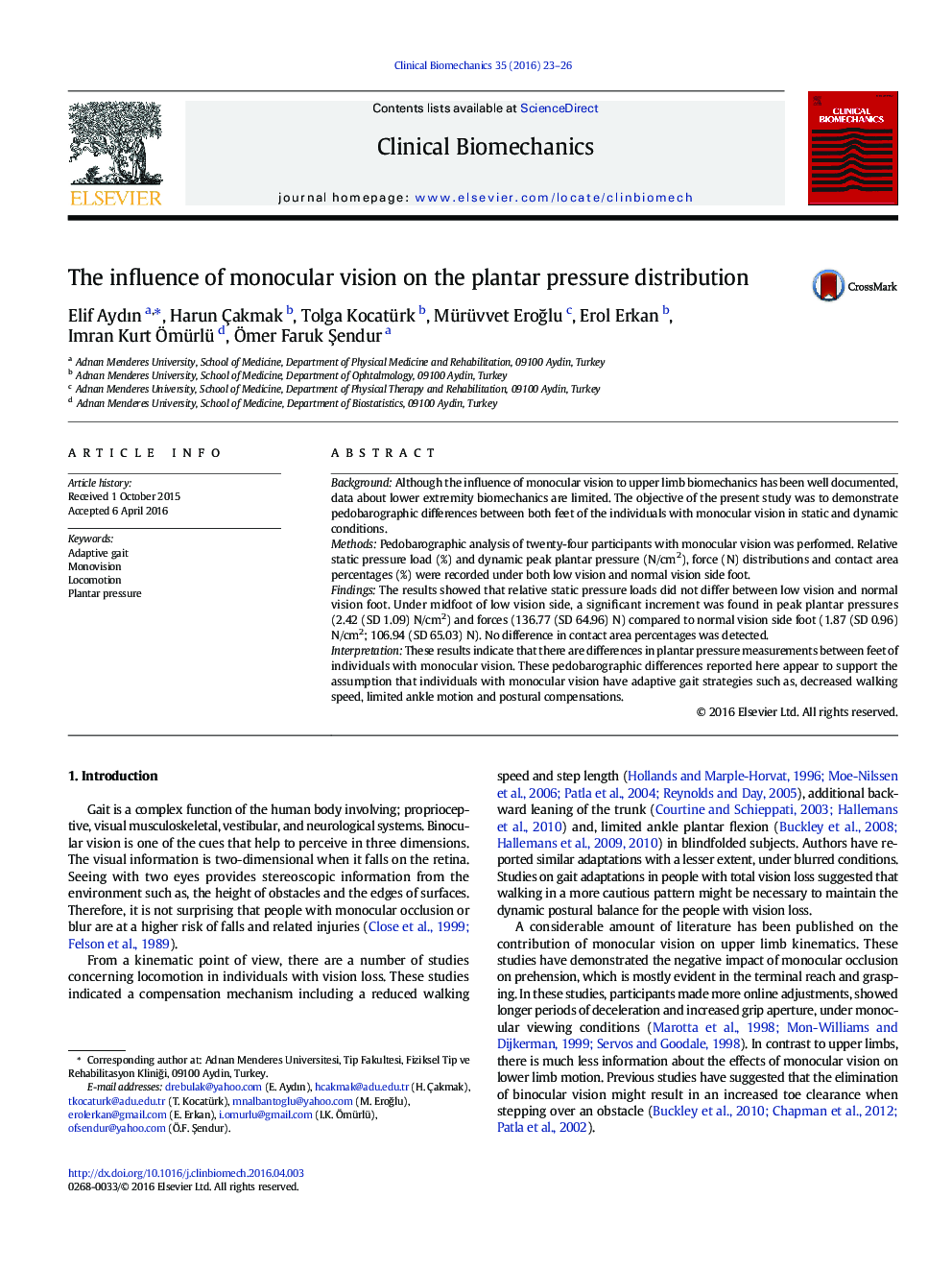| Article ID | Journal | Published Year | Pages | File Type |
|---|---|---|---|---|
| 4050104 | Clinical Biomechanics | 2016 | 4 Pages |
•Static plantar loading patterns between feet are similar in monocular vision.•There are different loading patterns between feet under dynamic conditions.•Loading under midfoot of low vision side was higher than normal vision side.
BackgroundAlthough the influence of monocular vision to upper limb biomechanics has been well documented, data about lower extremity biomechanics are limited. The objective of the present study was to demonstrate pedobarographic differences between both feet of the individuals with monocular vision in static and dynamic conditions.MethodsPedobarographic analysis of twenty-four participants with monocular vision was performed. Relative static pressure load (%) and dynamic peak plantar pressure (N/cm2), force (N) distributions and contact area percentages (%) were recorded under both low vision and normal vision side foot.FindingsThe results showed that relative static pressure loads did not differ between low vision and normal vision foot. Under midfoot of low vision side, a significant increment was found in peak plantar pressures (2.42 (SD 1.09) N/cm2) and forces (136.77 (SD 64.96) N) compared to normal vision side foot (1.87 (SD 0.96) N/cm2; 106.94 (SD 65.03) N). No difference in contact area percentages was detected.InterpretationThese results indicate that there are differences in plantar pressure measurements between feet of individuals with monocular vision. These pedobarographic differences reported here appear to support the assumption that individuals with monocular vision have adaptive gait strategies such as, decreased walking speed, limited ankle motion and postural compensations.
